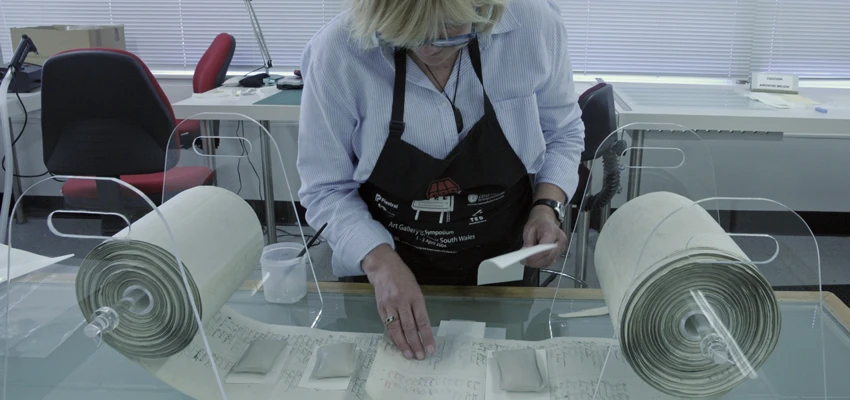Women's Suffrage Petition — from its creation to now

Joining up the Women’s Suffrage Petition scrolls. Archives New Zealand. CC BY 2.0.
Follow the journey the Women's Suffrage petition has taken — from its creation on 19 September 1893 to its preservation as a taonga for future generations in the He Tohu exhibition today.
Concepts
Inequality, issue, action, commitment, perseverance, organisation, implications.
He Tohu themes: the documents, people, living together, our future.
What to do
Learn about the journey the Petition took
Get students to:
Then create a timeline of key events that led to all women in New Zealand gaining the right to vote in 1893.
Students watch The power to vote and answer the following questions:
What conditions of living in the 1800s made it so hard for the Petition to get to, and be accepted in, parliament?
What made the difference for the problems to be overcome and the Petition to eventually be successful?
Why were women so determined to find success with this petition?
What current New Zealand living conditions and resources would make it easier to collect signatures for a petition to present to parliament today? What conditions of life today would make it more difficult?
Why do women in New Zealand still not have equal rights?
Understand the Petition's history in He Tohu
Before the He Tohu exhibition opened, New Zealand’s 3 iconic constitutional documents moved from Archives New Zealand to the National Library of New Zealand in a historic and emotional predawn ceremonial procession.
Get students to read Moving the documents, watch the video on that web page, and answer the following questions:
What protocols and ceremony surrounded the moving of New Zealand's founding documents from Archives New Zealand to the He Tohu exhibition in the National Library, Wellington?
Why was it such a careful and significant ceremony?
Why did this happen predawn?
Who do you think was involved in the complete process?
He Tohu is a permanent exhibition of 3 iconic constitutional documents that shape Aotearoa New Zealand. To find out more, get students to watch He Tohu exhibition (YouTube video, 3:06). Discuss:
the importance of He Tohu
what interactions they could see
what information is available
why has so much time and effort has gone into creating He Tohu?
Find out about the conservation of the Petition as a taonga
Get students to read:
DNA test confirms blank parchment is part of Treaty of Waitangi — to learn about the ongoing preservation research of the constitutional documents.
Then answer these questions:
What are the concerns about preserving this document today?
What processes have had to happen in order to display the original Women's Suffrage Petition documents in He Tohu?
What conditions have to be managed and monitored carefully?
What occupations and skills would be involved with the process of moving the Women's Suffrage Petition from Archives New Zealand to He Tohu and the preservation of the original documents?
What are the special materials and processes used to preserve the Women's Suffrage Petition in He Tohu?
Extension: The feminist activists of the Petition
Students watch The feminist activists of the Petition and answer these questions:
What dispositions did the women have who drove the Women's Suffrage Petition?
Find examples of feminist activists today who are forging the way for other women.
What issues could you support that would improve living conditions for women today and in the future?
Some useful resources
He Tohu:
Topic Explorer:
Archives New Zealand:
NZHistory:
New Zealand Curriculum — social sciences
Identity, Culture, and Organisation
Achievement objectives:
